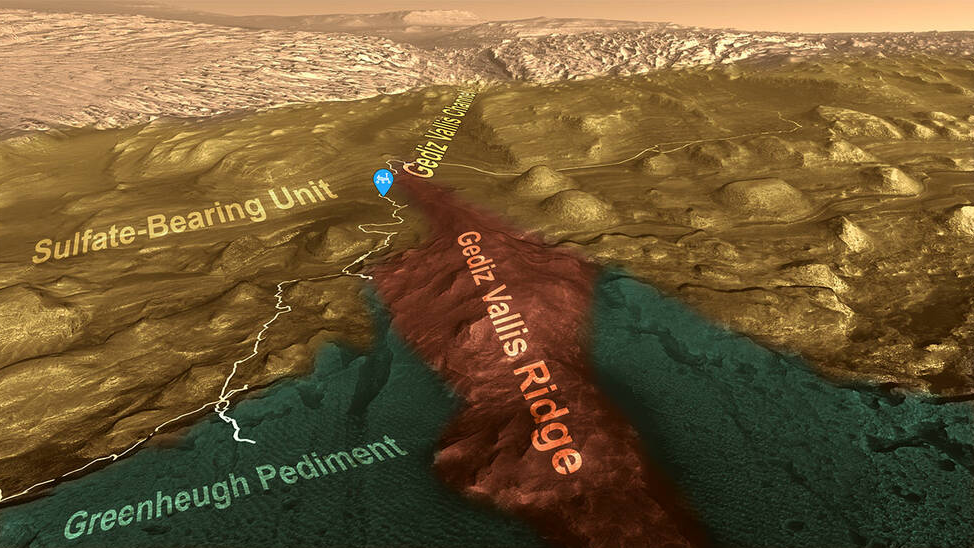
The route NASA's Curiosity Mars rover has taken while driving through the lower part of Mount Sharp is shown as a pale line here. Different parts of the mountain are labeled by color; Curiosity is currently near the top end of Gediz Vallis Ridge, which appears in red. /NASA
The route NASA's Curiosity Mars rover has taken while driving through the lower part of Mount Sharp is shown as a pale line here. Different parts of the mountain are labeled by color; Curiosity is currently near the top end of Gediz Vallis Ridge, which appears in red. /NASA
NASA's Curiosity Mars rover has reached a ridge on Mars that preserves an intriguing record of the red planet's watery past, as reported by NASA's Jet Propulsion Laboratory (JPL) in Southern California, United States.
After facing one of the most difficult climbs in the mission's history, Curiosity arrived at an area where it could study the long-sought ridge using its 2-meter robotic arm on August 14, according to JPL.
The ridge, named Gediz Vallis Ridge, is believed to be a remnant of powerful ancient debris flows.
The rover has taken abundant pictures and has been studying the composition of dark rocks that clearly originated elsewhere on the mountain. It spent 11 days at the ridge.
This mission provided scientists with the first up-close views of the eroded remnants of a debris flow fan, where the fan shape was formed by the debris flowing down the slope.
"After three years, we finally found a spot where Mars allowed Curiosity to safely access the steep ridge," said Ashwin Vasavada, Curiosity's project scientist at JPL.
"It's a thrill to be able to reach out and touch rocks that were transported from places high up on Mount Sharp that we'll never be able to visit with Curiosity."
While scientists are still poring over the imagery and data from Gediz Vallis Ridge, Curiosity has already turned to its next challenge: finding a path to the channel above the ridge so that scientists can learn more about how and where water once flowed down Mount Sharp, according to JPL.
Launched on November 26, 2011, Curiosity is the largest and most capable rover ever sent to Mars. It landed on Mars on August 5, 2012.
(With input from Xinhua)